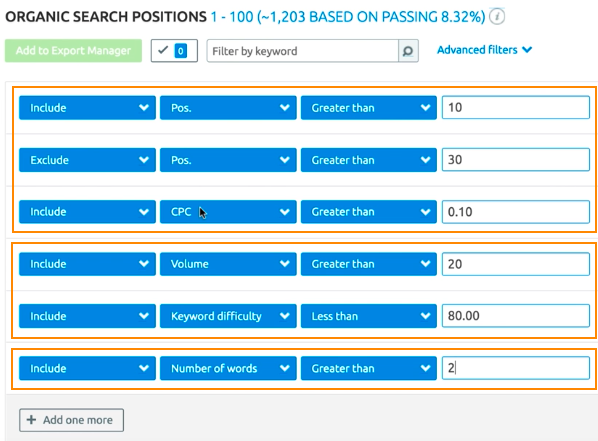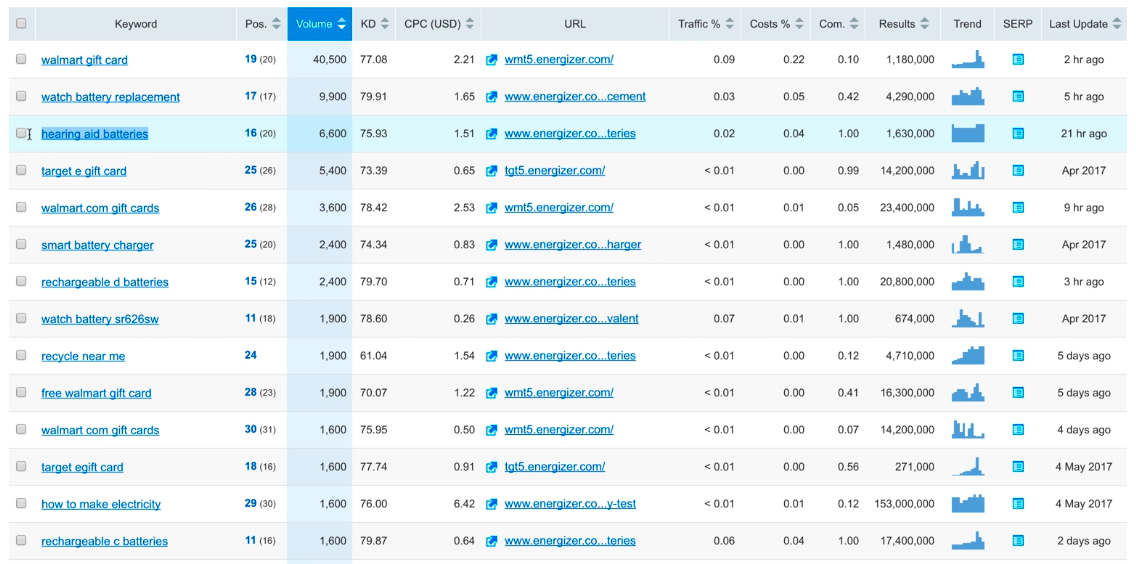Businesses may operate differently based on their industry or market share, but when it comes to SEO, everyone is the same. No matter the size or the nature of your company, its website still needs to rank well on search engines, and benefit from high visibility and traffic.
In this series of four short videos, A.J. Ghergich, an SEO pro and founder of Ghergich & Co., will explain how the combination of simple techniques and the SEMrush toolkit can help you gain relevant traffic. The first video in the series is about finding the pages on your website that have the best shot at ranking on the first page of a SERP, as well as picking the right keywords and filling in content gaps. — SEMrush Team.

Video Transcription
[Imitating Will Ferrell in Anchorman] “The Human Torch was denied a bank loan.”
What is up SEMrushers? My name is A.J. Ghergich, and I am the founder of Ghergich & Co. I am really into content marketing and SEO (as you could probably already tell by my flannel shirt.)
I’ve been in SEO since 2004, and started my own agency, Ghergich & Co., in 2012. We focus on creating high-end SEO assets and doing the outreach: getting social engagement and links for those pieces of high-end content for brands like Petco, Quicken Loans, a sister company of Staples right now, Quill, Salesforce, as well as many small- and medium-sized businesses.

SEMrush came to me and asked if we could do a quick series — four videos, all short, all actionable — on how I use SEMrush to get actual results for our clients. So, these are the topics we are going to cover, starting with how to identify striking distance keywords in hubs. It’s an honor to be here.
Enough yakkin’. Let’s dive into the first video.

Okay, let’s talk about how to identify striking distance keywords and use them to fill content gaps that you currently have with your competitors.
Striking distance keywords are simply keywords you rank for — but you rank for, you know, page two, page three, and not where you want to be, which is (of course) page one. So the idea is that they’re in striking distance of your goal.
I am currently on energizer.com. They’re not a client of mine, I picked them as an example site, because we’re both headquartered in St. Louis, Missouri.
1. Find the pages with the best potential
So if they were a client of mine, this is what I’d do. One of first things I’d do is to get a quick win, and that is to identify these keywords they’re ranking on page two and three with SEMrush. And go about a simple system to boost them over the course of couple weeks — not months, not years.
I would go over to SEMrush, I would go into the Domain Analytics, into the Keyword Positions section, and I would see that they have 30,000 keywords.

They’re a large brand, that’s not surprising, but obviously it’s too much to wade through. This is where SEMrush really shines for me is its ability to take large amounts of data, like 30,000 keywords, and allow me to really focus in on what I care about right at this moment. Now you’ll see I have a ton of filters.

Essentially, I use these filters to show me stuff on page two, and page three, with a little bit of transactional value.

I have it very low because batteries just don’t sell for that much (they’re not expensive), and little bit of volume, and actually a pretty high score for keyword difficulty. But this is a large brand, so they can handle that. If you were dealing with a local automotive repair shop, you might want be in the twenty or forty range on where you feel comfortable with keyword difficulty.

Lastly, I have a number of keywords. I am looking to reduce the noise since there are so many keywords. I am looking for phrases with three words and up.
So, what happens here is that we’ve got way less results. And again, we’re looking for striking distance keywords.
2. Find your hub
But what I am actually looking for, and I’ve found one right that piques my interest right away: ‘hearing aid batteries’. It has one of the highest volumes, but it has the ability to become a hub. So, what I am actually looking for is, yes, striking distance keywords, but I am also looking for keywords that could become a content category or a hub with lots of other terms around it. So I could lift that whole category up.

So, what we’ll do is we will add the word ‘aid’, and what you want to see at this point is lots of keywords on page two and page three. If you do, which we are seeing right here, are just tons of keywords on page two and page three. I mean that’s just potential right there, just waiting to be tapped.
3. Refine the pages
So, once you see that, you know that you’ve found your hub. But the first step is just to gather my assets. In this case there is a page on hearing aid batteries. It’s really just a single page, that’s it. There is no hub here. Then, what we are going to do is a very simple three-step process.
1. Increase internal links to your pages
You’re going to want to increase the internal links to those assets. I’ve checked, and this page has about 600 internal links, but there are thousands and thousands of pages on Energizer, so they could easily bump that up.
2. Refresh existing content
Then, the next thing you want to do is refresh the existing content. So you might wanna work in some of these new keywords, some semantically related language, and be more helpful to the reader and answering these questions that you see keywords are uncovering.
Wait, isn't there a tool for that in SEMrush? Right! It's SEO Ideas.
3. Create new content
Lastly, is create new content. Since they really only have the one asset, this is what I would do. I would create a hub that looked something like this: ‘batteries/hearing-aid’ or ‘hearing-aids’, and off of that I would have a ‘reviews’ section. I would have a ‘recycle’ section, because there are a ton of keywords in there about ‘how do you recycle?’. Then, there were tons of questions about how long these batteries last. And also people looking for charts, and size charts and comparison charts. Group these keywords and make a comparison chart section so you can compare the different battery sizes.
Stop right there, is there a tool in SEMrush that could help with that, too? No way, SEO Content Template!
Give it a try!
Okay, so go ahead and give this a try. You can connect with me on Twitter, I am @SEO. And let me know the results you were able to achieve. Our next video is coming out really soon. I am really excited because I get to show off my favorite SEMrush tool, which is Keyword Magic, and walk you through my process for finding and earning featured snippets.
